Periodontitis is a chronic inflammation of the teeth and their supporting structures, typically caused by bacterial infection in the mouth. As periodontitis develops, tissues such as the gums, periodontal ligament, and alveolar bone can be damaged to varying degrees, and in severe cases, tooth loss can occur. Although periodontitis may not show significant symptoms in its early stages, if left untreated, it can cause serious harm to oral health. Therefore, how to effectively treat and prevent periodontitis, restore oral health, and eliminate inflammation is a primary concern for many patients. This article will provide a detailed guide on how to effectively manage periodontitis through scientific treatment methods, proper daily care, and healthy lifestyle habits.
1. Overview of Periodontitis
1.1 Definition of Periodontitis
Periodontitis is a chronic inflammation caused by the accumulation of dental plaque (tartar), which typically starts as gingivitis. If not treated in time, the inflammation can extend to the alveolar bone and periodontal ligaments, eventually leading to periodontitis. Periodontitis not only causes gum swelling, bleeding, and pain, but also affects the supporting structures of the teeth, leading to tooth mobility or even tooth loss. Symptoms of periodontitis include swollen and bleeding gums, bad breath, and loose teeth.
1.2 Causes of Periodontitis
The root cause of periodontitis is the accumulation of dental plaque. Plaque is a sticky substance made up of food particles, bacteria, and their metabolic products. If not removed promptly, bacteria thrive on the surface of the teeth and around the gum line, forming tartar, which can lead to gum inflammation and, over time, periodontitis.
Additionally, several other factors can contribute to the development and progression of periodontitis:
- Poor Oral Hygiene: Irregular brushing, neglecting flossing and mouthwash, and the accumulation of plaque are the leading causes of periodontitis.
- Smoking: Smoking weakens the immune response of the gums, increasing the risk of periodontal disease.
- Genetic Factors: Individuals with a family history of periodontal disease are more susceptible to periodontitis.
- Diabetes: People with uncontrolled blood sugar levels are more prone to bacterial infections, including periodontitis.
- Hormonal Changes: Hormonal fluctuations during pregnancy, menopause, or while taking birth control pills can increase the risk of periodontitis.
- Poor Diet: Lack of essential nutrients, excessive sugar intake, or vitamin C deficiency can weaken oral health.
- Immune System Disorders: People with conditions such as HIV/AIDS or leukemia are more prone to developing periodontitis.
- Malocclusion: Crooked or misaligned teeth create pockets where food and bacteria can accumulate, increasing the likelihood of inflammation.
1.3 Classification of Periodontitis
Periodontitis is generally classified into mild, moderate, and severe stages:
- Mild Periodontitis: This stage is characterized by slight gum redness and swelling, often with mild bleeding, and the patient may experience little to no discomfort.
- Moderate Periodontitis: Gum swelling becomes more pronounced, bleeding increases, and the teeth may show slight mobility.
- Severe Periodontitis: The gums are significantly swollen, and there may be pus drainage, considerable tooth mobility, or even tooth loss.
2. Symptoms of Periodontitis
The symptoms of periodontitis are often not immediately noticeable, especially in the early stages. Common signs include:
- Gum Bleeding: Particularly when brushing or using dental floss, the gums may bleed.
- Swelling and Redness of the Gums: The gums around affected teeth appear swollen and red.
- Bad Breath or Bad Taste: Bacterial infections in the gums can produce unpleasant odors in the mouth.
- Tooth Mobility: Damage to the alveolar bone weakens the support for the teeth, causing them to become loose.
- Increased Tooth Gaps: Destruction of periodontal tissues leads to abnormal gaps between teeth.
- Gum Recession: Prolonged periodontitis can cause the gums to recede, exposing the tooth roots.
- Pain or Discomfort: In some cases, periodontitis may cause pain, especially when the inflammation is severe.

3. How to Treat Periodontitis
3.1 Professional Treatment
While good daily oral care can help prevent periodontitis, once symptoms develop, seeking professional treatment is essential. The treatment of periodontitis generally includes the following methods:
3.1.1 Teeth Cleaning and Scaling
For mild and moderate periodontitis, the most common treatment is professional cleaning, which involves removing plaque, tartar, and toxins to reduce bacterial infection and alleviate gum inflammation. Common cleaning treatments include:
- Ultrasonic Scaling: Using ultrasonic devices to remove plaque and tartar from the surface of the teeth and beneath the gums.
- Manual Scaling: Hand instruments are used to remove tartar below the gumline to help restore gum health.
3.1.2 Periodontal Surgery
If periodontitis has progressed to moderate or severe stages, and there is significant damage to the gums and alveolar bone, basic cleaning may not be sufficient. In such cases, periodontal surgery may be necessary. Common periodontal surgeries include:
- Flap Surgery: The gum is cut and lifted back to allow for cleaning of the deeper layers of plaque and tartar, as well as bone repair.
- Bone Grafting: For severe alveolar bone loss, bone grafts may be used to regenerate the damaged bone structure.
- Regenerative Periodontal Surgery: Biological membranes or other materials may be used to promote the regeneration of damaged periodontal tissues.
3.1.3 Medication
In some cases, a dentist may prescribe medications to help treat periodontitis. These may include:
- Antibiotics: To control bacterial infection in the mouth.
- Antibacterial Mouthwashes: Mouthwashes containing antibacterial ingredients can help reduce bacteria and inflammation in the gums.
- Nonsteroidal Anti-Inflammatory Drugs (NSAIDs): These drugs help reduce inflammation and pain.
3.2 Daily Care
In addition to professional treatments, maintaining good daily oral care is crucial for controlling and eliminating the symptoms of periodontitis. Effective care methods include:
3.2.1 Proper Brushing
Brushing your teeth is the most fundamental oral hygiene practice. Studies show that brushing correctly can remove food debris and plaque from the tooth surface, helping to prevent cavities and gum disease.
- Correct Brushing Technique: Brush your teeth at least twice a day, for at least two minutes each time. Hold the toothbrush at a 45-degree angle to your teeth and use gentle, circular motions instead of scrubbing back and forth. Be sure to clean all surfaces of the teeth, especially the gumline, chewing surfaces, and inner sides.
- Choosing the Right Toothbrush and Toothpaste: Use a toothbrush with soft bristles to avoid damaging your gums. Toothpaste containing fluoride is beneficial as it strengthens enamel and helps prevent cavities.
3.2.2 Using Dental Floss
Dental floss is essential for cleaning between teeth, where toothbrushes cannot reach. Regular flossing effectively removes food particles and plaque between teeth, helping to prevent cavities and gum disease.
3.2.3 Mouthwash
Mouthwash can help cleanse the mouth, kill bacteria, and freshen the breath. Choosing a mouthwash with fluoride or antibacterial ingredients can help reduce the risk of cavities and gum disease. Mouthwash should be used in addition to brushing and flossing, not as a replacement.
3.3 Healthy Eating Habits
3.3.1 Limit Sugar Intake
Sugar is the primary food source for bacteria in the mouth. When bacteria metabolize sugar, they produce acidic by-products that erode tooth enamel and lead to cavities. To protect your teeth and gums, reduce your consumption of sugary snacks, drinks, and desserts.
If you do consume sugary foods, it is better to do so during meals when saliva production is higher, as saliva helps neutralize acids in the mouth and protect enamel from erosion.
3.3.2 Eat Calcium-Rich Foods
Calcium is essential for maintaining strong teeth and bones. Incorporate foods that are rich in calcium, such as dairy products (milk, cheese, yogurt), leafy green vegetables, and fish. Vitamin D is also crucial for calcium absorption, so include vitamin D-rich foods (like fish, eggs, and fortified foods) in your diet.
3.3.3 Eat Fiber-Rich Foods
High-fiber foods, such as fruits, vegetables, and whole grains, help stimulate saliva production. Saliva helps cleanse the teeth and neutralize acids, reducing the risk of cavities and gum disease.
3.3.4 Drink Plenty of Water
Drinking water is the best way to maintain oral health. It helps rinse away food particles and bacteria, promoting saliva production. Fluoridated water is especially beneficial as it strengthens enamel and helps prevent tooth decay.
3.4 Lifestyle Adjustments
3.4.1 Quit Smoking
Smoking is one of the most significant risk factors for periodontitis. It weakens the immune system, making it harder for the gums to fight infections. Quitting smoking can improve gum health and reduce the risk of periodontal disease.
3.4.2 Regular Dental Checkups
Regular dental checkups and cleanings are vital for maintaining oral health. A dentist can detect any dental problems early and provide treatment before they become more serious. Even if you don’t have any apparent dental issues, professional cleaning can remove plaque and tartar buildup
, reducing the risk of periodontitis.
It is recommended to have a dental checkup at least once a year, especially if you are in a high-risk group for periodontitis, such as smokers or diabetics.
3.4.3 Stress Management
Chronic stress can affect the immune system and make it more difficult for the body to fight infections, including gum disease. Practicing stress-reducing techniques such as mindfulness, meditation, and physical exercise can help maintain both mental and oral health.
4. Prevention of Periodontitis
Preventing periodontitis relies heavily on maintaining good oral hygiene practices. Brushing and flossing regularly, using mouthwash, and scheduling routine dental checkups can significantly reduce the risk of periodontitis. Early detection and treatment of gingivitis are crucial in preventing the progression to periodontitis. By sticking to these good habits, you can greatly reduce your chances of developing periodontitis and maintain long-term oral health.
5. Conclusion
Periodontitis is a common oral disease that can lead to serious consequences if left untreated, including tooth mobility and loss. However, through timely treatment, scientific daily care, and a healthy lifestyle, most patients can effectively manage and eliminate the symptoms of periodontitis, restoring oral health. Periodontitis treatment relies not only on medical interventions but also on maintaining proper oral hygiene, a balanced diet, and healthy habits. By adopting these comprehensive strategies, individuals can ensure their teeth and gums remain healthy for a lifetime, leading to a beautiful and functional smile.











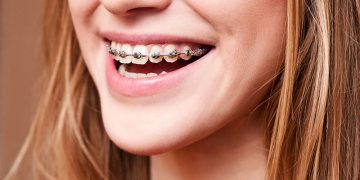
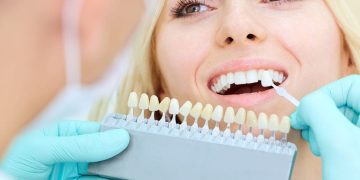




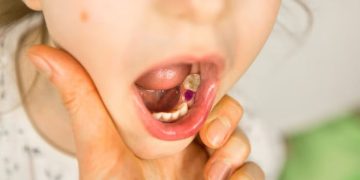
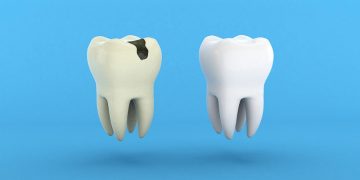






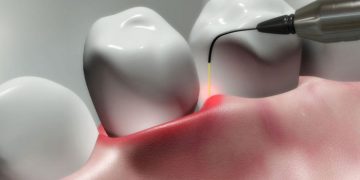


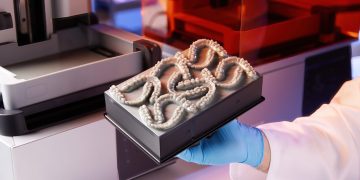

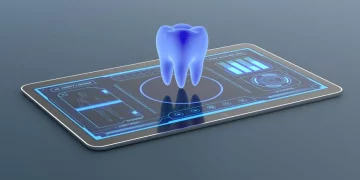














Discussion about this post